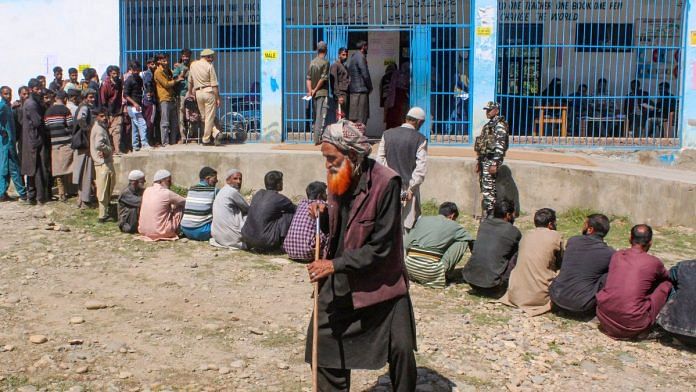Thank you dear subscribers, we are overwhelmed with your response.
The Kashmir Valley, often referred to as “heaven on earth,” has long been a region of extraordinary cultural richness and beauty. However, it is also a land of profound complexities. The ties that bind Kashmiris—shared history, culture, and traditions—exist alongside fault lines that have divided communities for decades. Understanding these unifying and divisive factors is essential to appreciate the intricacies of this region and its people.
What Binds Kashmiris
Kashmir’s history, steeped in the influences of Buddhism, Hinduism, and Islam, has created a cultural mosaic. Traditional crafts, music, and cuisine reflect this confluence. For instance, the Kashmiri wazwan (a traditional meal) and Sufi poetry are celebrated across religious and ethnic lines. The region’s legacy of tolerance and coexistence, exemplified by the syncretic philosophy of Kashmiriyat, serves as a shared cultural foundation.
The breathtaking landscapes of Kashmir have shaped a common way of life. Agriculture, horticulture (particularly the cultivation of apples and saffron), and handicrafts like Pashmina weaving are central to the economy and daily lives of many Kashmiris. This shared dependency on natural resources fosters a collective identity.
Decades of conflict have paradoxically united many Kashmiris in shared experiences of suffering and resilience. Whether it’s coping with natural disasters like the 2014 floods or the impact of political instability, these challenges have created a sense of solidarity.
The quest for liberty and justice is central to Kashmir’s identity and ongoing struggles. These ideals resonate deeply with Kashmiris, reflecting a shared aspiration for dignity, self-determination, and fairness. However, the interpretation of what liberty and justice entail has often been a source of division within the region. This duality—of unity in aspiration but division in approach—has significantly shaped Kashmir’s socio-political landscape.
In many ways, the ideals of liberty and justice are deeply rooted in Kashmiri culture and faith traditions. Islamic teachings of justice, Hindu philosophies of coexistence, and the region’s syncretic legacy of Kashmiriyat emphasize fairness and individual freedom, creating a moral foundation for these shared values.
What divides Kashmiris
While a majority of Kashmiris are Muslim, the region also has significant Hindu, Sikh, and Buddhist communities. The division between Kashmiri Muslims and Pandits—who largely migrated from the valley in the 1990s due to militancy-related violence—remains a source of pain and mistrust.
Divergent political aspirations are a significant dividing factor. While some Kashmiris advocate for complete integration with India, others seek greater autonomy, and yet others support independence or alignment with Pakistan. These differences often play out in protests, elections, and debates about the region’s future.
The term “Kashmiris” often obscures the diversity within the region. The valley’s residents are distinct from those in Jammu and Ladakh, with different languages, customs, and priorities. Even within the valley, divides exist between urban and rural populations and among ethnic groups like Gujjars, Bakarwals, and Paharis.
Economic inequality has grown as certain sectors flourish while others struggle. Urban centers like Srinagar have access to better infrastructure and opportunities, whereas rural areas often face neglect, furthering regional tensions.
Decades of insurgency, militarization, and human rights issues have sown distrust among communities. This is exacerbated by the presence of external actors and differing narratives about the conflict.
The settlement of non-Kashmiris, especially in the wake of policy changes like the abrogation of Article 370 in August 2019, has been a highly contentious issue. This move, which allows individuals from outside the region to own property and settle in the erstwhile state, has the potential to significantly alter the socio-political and demographic landscape of the region.
While the return of Kashmiri Pandits is often cited as a justification for resettlement policies, the broader influx of non-Kashmiris could overshadow efforts to ensure the safe and dignified return of this displaced community. This could further complicate an already sensitive issue.
The settlement of outsiders is likely to deepen existing divides between different communities within Kashmir, making efforts at reconciliation and trust-building even more challenging.
For many Kashmiris, the settlement of non-locals is seen as a continuation of their perceived political and economic disenfranchisement, making it harder to foster goodwill.
The way forward
The quest for liberty and justice binds Kashmiris in their shared yearning for dignity and fairness. However, it divides them in how these ideals are defined and pursued. The challenge lies in reconciling these visions to create a cohesive narrative that respects diversity while addressing the region’s complex realities.
A sustainable resolution requires acknowledging these differences and building a framework that ensures justice for all communities—across political, religious, and ethnic lines. Liberty and justice, though divisive in their interpretations, have the potential to unite if pursued through inclusive dialogue and mutual respect. This delicate balance is key to unlocking Kashmir’s collective future.
For a more cohesive future, efforts must focus on fostering dialogue and addressing grievances. Reviving and emphasizing the philosophy of Kashmiriyat could be a unifying force. Policies that prioritize equitable economic development, interfaith dialogue, and reconciliation can help heal divides. Education and cultural exchange programs can play a crucial role in bridging gaps between communities.
Ultimately, the journey toward unity in Kashmir lies in embracing its diversity while finding common ground in shared heritage and aspirations. Despite its challenges, the resilience of the Kashmiri people offers hope for a brighter, more inclusive future.
To avoid further complications, any settlement policy must be approached with sensitivity and inclusivity. Ultimately, balancing development goals with the region’s socio-political realities is crucial to avoiding further polarization and unrest.
These pieces are being published as they have been received – they have not been edited/fact-checked by ThePrint


